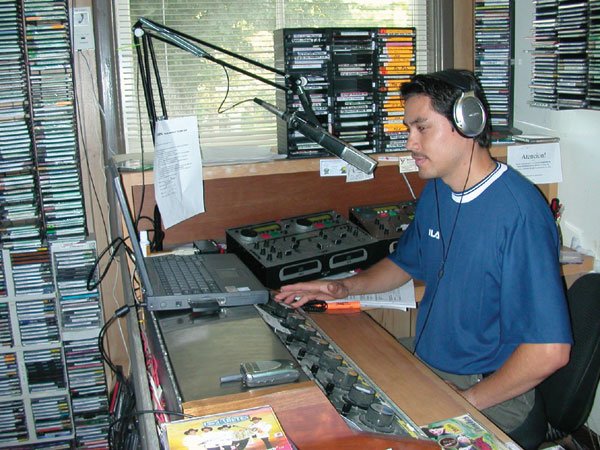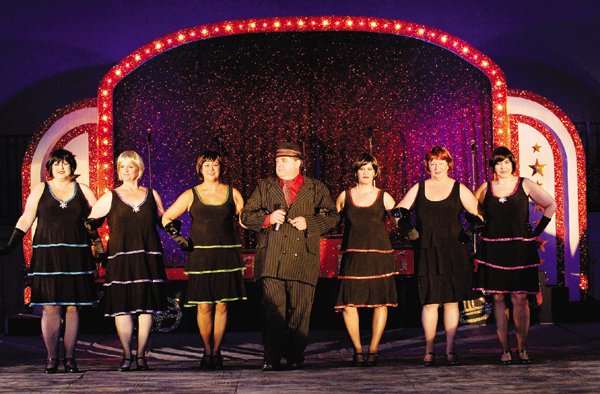Jeopardy contestants, name this radio station based on the
following clues: I have been in Hollister for more than four
decades, can draw more than 200 people to one of my remote
broadcasts and play a strong public service role in the community,
often inviting local charities and agencies into the studio on
Friday afternoons.
Jeopardy contestants, name this radio station based on the following clues: I have been in Hollister for more than four decades, can draw more than 200 people to one of my remote broadcasts and play a strong public service role in the community, often inviting local charities and agencies into the studio on Friday afternoons.
Left scratching your head?
You may be at a disadvantage if you don’t speak Spanish, because KMPG “Radio Bonita” doesn’t play Britney Spears or John Mayer. The 5,000-watt station (AM 1520) plays the Spanish-language version of country music – rancheras.
Rancheras are part and parcel of the cultural fabric of Mexico, encompassing ballads and love songs that tell of gunfighters and rebels, border-crossings and the narcotrafficos (drug smugglers). They evoke the Mexican heartland just as strongly as Hank Williams does the American Midwest.
Like much of the music classified as “Latin,” rancheros are heavy on guitar and horns but light on bass. Their most popular form is the ballad called a corrido.
“A corrido describes something that happened in history, real or imagined,” said Guillermo Padilla, general manager of KMPG. “A lot of times they’re love songs that talk about some guy who lost a girl or who wants a girl or whose girl is with another man.”
Padilla enjoys the style, but won’t play any corridos that celebrate drug culture.
“We believe those corridos just make those guys look good, so I won’t play them,” he said. “Even the people who make the CDs know I don’t, so they won’t send me those songs. In the last shipment there was a single from this guy Lupillo Rivera, and sometimes he sings songs about the narcotraffickers, but ‘Poco y Poco’ [his latest single] doesn’t talk about that, so we’ll play it. We don’t boycott the person, just the music … the song that talks about that.”
Last year Padilla took control of the Hollister station after 23 years on the job.
“When I started (in the industry) I didn’t have any training,” he said. “I loved radio. That was my training.”
Padilla began working for KMPG one hour per week. He lived near the transmittal site and would stand outside its gates at 5am, waiting for the chance to learn how operate the transmitter. In those days it took 45 minutes to activate a broadcast because each transmission bulb had to be turned on and warmed up individually.
“Today we just flip a light switch in the studio and it’s on the air,” said Padilla, who plans to modernize the way the station’s DJs work in the next few years as well. “Right now we record a (commercial) spot on CD and then we have to play it each time. When we convert the system to be computerized, we will record it to one computer and play it from the other one with no disc. We’ll have more control and more quality.”
Padilla also wants to return the station to its roots.
“(KMPG) used to be an English-speaking station,” he said. “They started out with one hour of Spanish radio and the owners saw more potential in that, so they switched the station to be completely Spanish.”
Padilla would like to reach out to English-speakers, noting that many businesses overlook KMPG because their owners don’t speak Spanish. “They hear the songs and they keep going,” said Padilla. “But we are one more source of information. We’re set up to broadcast bilingual any time no matter what’s going on. We did it during the last big quake. As long as the antennas are still standing, we have a generator by the antennas on Nash Road, and we can set up to do a remote broadcast in one hour.”
The station welcomes community organizations year-round, offering a free open-mike period form 11:05-11:30am Fridays. Recent visitors include representatives from the California Highway Patrol, tobacco cessation programs and job training services. During the rest of the week nonprofit groups also get their advertisements on air for free without having to settle for middle-of-the-night slots. The station is on air during work hours, 6am-6pm.
“I don’t really measure how many people are listening,” said Padilla. “I measure my audience through our remote controls, where you go out with your guys and you set up to broadcast from somewhere in town. Ours see about 200 people. It makes me very proud because when I see some big radio stations from San Jose at places like Target … they can go to these multinational corporations for broadcasts, but they don’t have anybody. We’re neighbors in this town.”
For advertising information, call (831) 637-7994 or e-mail ap******@*****ro.net.














